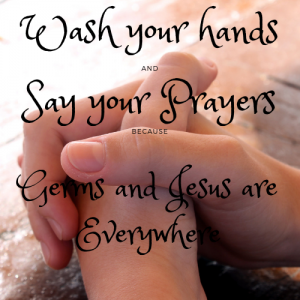 One of the first things a guest will see upon entering my home is a simple decoration that encapsulates my desire for our family life. It contains a few photos of my wife, our boys, and myself, as well as six words declaring our family values: Kindness, Respect, Honesty, Humility, Generosity, and Gratitude.
One of the first things a guest will see upon entering my home is a simple decoration that encapsulates my desire for our family life. It contains a few photos of my wife, our boys, and myself, as well as six words declaring our family values: Kindness, Respect, Honesty, Humility, Generosity, and Gratitude.
Each of these values is relational, and places the needs, dignity, and worth of the other person above oneself. As we enter this season of thanksgiving, I believe it’s worth spending a few moments considering gratitude, and what the significance of this value might be.
When was the last time you directly expressed gratitude? Were you actually feeling grateful at the time? How did you feel after you shared your appreciation? How did the other person respond? Did they receive it well? Did they play the “aw shucks, it was nothing” card? Did they just text you back with the conversation-killing “thumbs up” emoji? 
In recent years, researchers in the field of positive psychology have attempted to understand how gratitude might impact other feeling states (temporary) or personality traits (enduring) in the person who expresses gratitude, and the recipient of the gratitude. Gratitude, it turns out, has a direct relationship to joy.
Watkins et al. (2018) found that more grateful people (trait) tend to experience more joy. They also found that people who are more generally joyful (trait) tend to express more gratitude (state) and report higher subjective well-being over time. Other researchers (You et al., 2018) found that grateful people may notice more of the positive in their environments, including available social supports, as well as experience fewer emotional difficulties.
Photo by rawpixel on Unsplash
So what does that mean for us? For everyday folks? For non-research participants? It means that we should be cultivating gratitude in ourselves. Our thoughts, our actions, our intentions, our responses to pleasurable and painful experiences, and all other elements of our lives, should be products of the gratitude in our hearts. From a Christian perspective, we should be continually grateful because the very breath we breathe is a gift from God, as well as the free will to choose whether to express gratitude with that breath. Even the painful breaths.
You may be reading this and thinking, “Why on earth would I be grateful for painful experiences!?” If you’re interested in a detailed explanation for why Christians might be grateful for painful experiences, I’ll refer you to C.S. Lewis’ book, The Problem of Pain. For the purposes of this brief post, however, I’ll just focus on the research stating that it’s healthy to be grateful, and that we miss out on a great deal of good in our lives when we choose otherwise.
To return to the good that results from feeling and expressing gratitude, is there any benefit to others when we show gratitude? I mentioned above that gratitude is, by definition, relational. Does this necessarily mean that there is a direct benefit to the recipients of our gratitude? According to Lee et al. (2018), the day after receiving gratitude, recipients tended to experience greater happiness, see themselves as having more prosocial impact, and to be more engaged at work.

Photo by Debby Hudson on Unsplash
I guess a good way to conclude would be to briefly explore why we sometimes might not express gratitude even when we feel grateful. In a creative study asking participants to write a letter expressing gratitude, Kumar and Epley (2018) found that participants tended to underestimate the amount of surprise recipients would feel, overestimate the awkwardness felt upon receiving gratitude, and underestimate the resulting joy felt by recipients.
The bottom line: if you find yourself holding back a compliment, a text of thanks, or anything else that lets a person know you value them and their contributions to your life and experience, consider the good you can do in both your life and theirs. Tell them you are grateful!

Photo by Lucas Lenzi on Unsplash
As we head into this season of thanksgiving, let’s not treat gratitude like a New Year’s resolution. Gratitude is not something that should be focused on once a year and then forgotten. Rather, it is something that should be lived and practiced daily, throughout our lives, in every moment. For your sake, and for the sake of others, let your gratitude show!
References
Kumar, A., & Epley, N. (2018). Undervaluing gratitude: Expressers misunderstand the consequences of showing appreciation. Psychological Science, 29(9), 1423–1435. https://doi.org/10.1177/0956797618772506
Lee, H. W., Bradburn, J., Johnson, R. E., Lin, S.-H. (Joanna), & Chang, C.-H. (Daisy). (2018). The benefits of receiving gratitude for helpers: A daily investigation of proactive and reactive helping at work. Journal of Applied Psychology. https://doi.org/10.1037/apl0000346
Watkins, P. L., Emmons, R. A., Greaves, M. R., & Bell, J. (2018). Joy is a distinct positive emotion: Assessment of joy and relationship to gratitude and well-being. The Journal of Positive Psychology, 13(5), 522-539.
You, S., Lee, J., Lee, Y., & Kim, E. (2018). Gratitude and life satisfaction in early adolescence: The mediating role of social support and emotional difficulties. Personality and Individual Differences, 130, 122–128. https://doi.org/10.1016/j.paid.2018.04.005
—

Robert Pate, Psy.D.
Director of Clinical Training, Doctor of Psychology Program
College of Behavioral and Social Sciences
 Especially for students, we will work with you as best we can to help you develop a publishable blog. So, what do you have to lose? Get typing!
Especially for students, we will work with you as best we can to help you develop a publishable blog. So, what do you have to lose? Get typing!



 Some of the answers to this question about belief comes down to cultural supports. Children don’t think of concepts of germs, Santa, or God on their own. (Actually, there is some really interesting research suggesting that children may be predisposed to belief in a being like God, even without the cultural supports I’m about to describe…but that’s a topic for a future blog.) Rather, children come to believe these concepts because of the constant cultural discourse around these concepts. Take my own home, as an example. The one picture I have hanging up in our bathroom instructs my children to “wash your hands and say your prayers because germs and Jesus are everywhere.” These are the kinds of cultural supports—echoed in our daily conversations and activities—that may prompt children’s belief in these otherwise unobservable entities.
Some of the answers to this question about belief comes down to cultural supports. Children don’t think of concepts of germs, Santa, or God on their own. (Actually, there is some really interesting research suggesting that children may be predisposed to belief in a being like God, even without the cultural supports I’m about to describe…but that’s a topic for a future blog.) Rather, children come to believe these concepts because of the constant cultural discourse around these concepts. Take my own home, as an example. The one picture I have hanging up in our bathroom instructs my children to “wash your hands and say your prayers because germs and Jesus are everywhere.” These are the kinds of cultural supports—echoed in our daily conversations and activities—that may prompt children’s belief in these otherwise unobservable entities. The answer? It depends. Some kids—but not all—did believe that the Candy Witch existed when asked after Halloween. The kids who were the most likely to believe in the Candy Witch were older (e.g., 5 years old, rather than 4 years old). The older kids who had received a visit from the Candy Witch were the most likely to believe. Interestingly, a visit by the Candy Witch didn’t seem to convince the younger children to believe any more than the younger children who were not visited. It’s possible that the older children were better able to piece together the clues about the existence of the Candy Witch (e.g., the stories, the disappearing candy, the new toy) than the younger children were.
The answer? It depends. Some kids—but not all—did believe that the Candy Witch existed when asked after Halloween. The kids who were the most likely to believe in the Candy Witch were older (e.g., 5 years old, rather than 4 years old). The older kids who had received a visit from the Candy Witch were the most likely to believe. Interestingly, a visit by the Candy Witch didn’t seem to convince the younger children to believe any more than the younger children who were not visited. It’s possible that the older children were better able to piece together the clues about the existence of the Candy Witch (e.g., the stories, the disappearing candy, the new toy) than the younger children were. This past spring,
This past spring,  Perhaps you have an interest in how your academic pursuits and community interests might align. If so, I’d encourage you to find out more about The Legacy Project or other
Perhaps you have an interest in how your academic pursuits and community interests might align. If so, I’d encourage you to find out more about The Legacy Project or other  Dr. Jacqueline N. Gustafson
Dr. Jacqueline N. Gustafson

 Here in this blog you will see snapshots of some of the research conducted through the CSHB. You will also hear stories of researchers bringing their identities as scientists and Christians together in the research process. You will read about innovative research happening across the globe and have an opportunity to engage in conversations about the implications. You may even find that you want to author a blog post to share about your own research, research you have read about, or your personal journey as a researcher. (Look for a future blog post for details on how to become a CSHB blog contributor!)
Here in this blog you will see snapshots of some of the research conducted through the CSHB. You will also hear stories of researchers bringing their identities as scientists and Christians together in the research process. You will read about innovative research happening across the globe and have an opportunity to engage in conversations about the implications. You may even find that you want to author a blog post to share about your own research, research you have read about, or your personal journey as a researcher. (Look for a future blog post for details on how to become a CSHB blog contributor!)